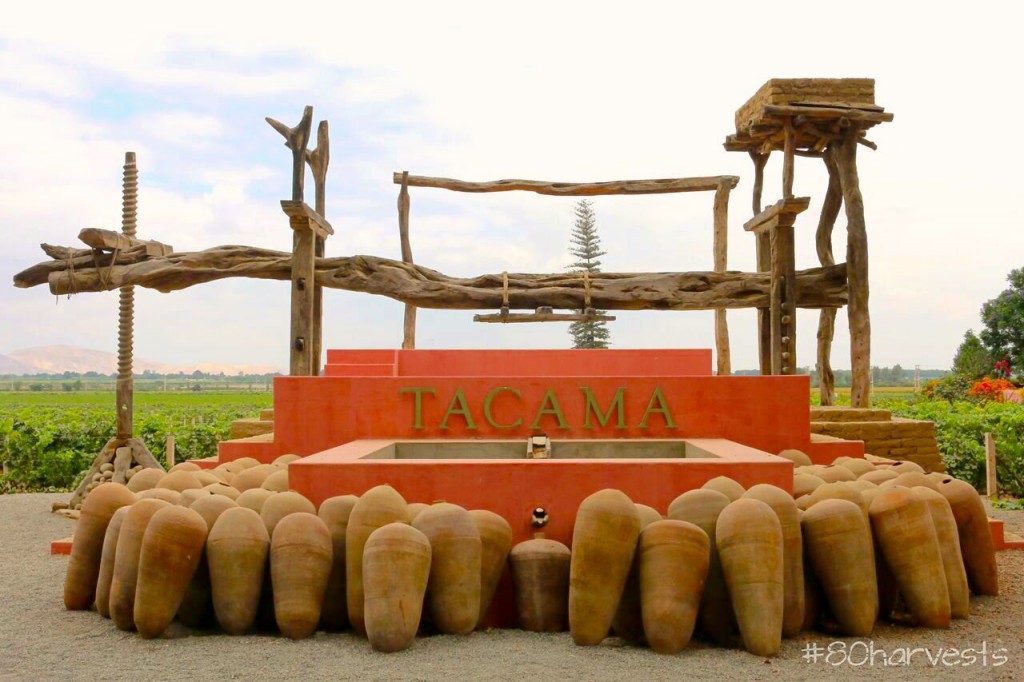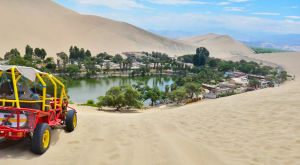Surrounded by sand dunes and palm trees, Peru’s wine region doesn’t offer your usual vineyard vista. The region is renowned for geogylphs, sand boarding, dune buggies and Quebranta grapes. While Peru is certainly an oddball with regard to South American wine production, it is by no means new. The country is in fact the oldest wine producer on the continent. How, you ask? Let’s dip into…

Cuzco, near Machu Picchu, was the original wine region in South America
A brief history of Peruvian wine & Ica
Peru was one of the first ports of call for the Spanish conquistadors and they spared little time in taking over the Incan empire, not only with brute force and crippling foreign diseases, but also with their agriculture and vines. The first grapes were planted in the epicentre of the ancient empire, in the Cusco region, best known for Machu Picchu.
While the highlands were no feat for the natives, the sea-dwelling Spaniards soon thought the wiser of planting at over 3000m altitude and brought the vines down a couple thousand meters to the less dizzying region of Ica, now the heartland of Peruvian wine.

Vinos de Arena is the project of Bernardo Roca Rey with winemaker Lyris Monasterio. The vines have been planted in the middle of sand dunes. Fortunately an underground stream gives them the water needed to irrigate the vines.
Although Ica is only 50km from the coast it has almost no maritime influence. Ica has a warm, desert climate flooded with light and the solar radiation that comes with being on the 14th parallel. Fortunately for the Spaniards, the Incas had already done the groundwork for them: the sandy and clay loam soils were nurtured by old Incan waterways that channeled mountain rivers into the fertile valley. The vines grew with vigour and the new wine industry blossomed in the late 16th century, so much so that it became the second biggest money-spinner for Peru after silver mining.
The Spanish vice-royalty put an end to this boom when they banned Peruvian wine production in a bid to protect their own national wine industry from the New World competition. Producers therefore began to use the vines for aguardiente instead and this heralded the start of Peru’s national love affair with Pisco. By the time the ban was lifted, Pisco was a staple in the daily drinking habits of locals and to this day it still accounts for a large part of the production of local vines.

South America’s oldest vineyard, Tacama, with a large wooden wine press, and botijas of wine imported from Chile
In spite of the challenges presented by jealous vice-royalties, devastating earthquakes and impoverishing wars, Peru’s wine industry is experiencing a renaissance. Peruvian wine (and Pisco) production is growing between 5% and 10% year-on-year, and Peru is now the 4th biggest producer in South America.
So what can you expect from Peruvian wine today?
The wines & the wine region
Peru’s wine heartland, Ica, is surrounded by sloping sand dunes and cacti. It is surprising to see vines in the middle of what appears to be the basin of a desert, but Ica is in fact an oasis – supplied by water from the mountain rivers. Each January through March, it leaps into action as the grapes are pulled in mainly to make Peru’s national beverage – Pisco. A brave few though make Peruvian wine.
Although Peruvian wine is not new, it has only just started to find its feet in terms of quality and niche. For many years the local wine has largely been focused on semi-sweet box wine, known as ‘borgoña’. However now you’ll find solid wines from some of the most historical and traditional producers of the country, and exciting wines from some of the rebels trying to carve a new identity for Peruvian varieties.
The International Varieties
So what works here, and what doesn’t? You can look at our detailed infographic about the vineyard conditions in Ica, but it is safe to say that the hot, desert climate with high luminosity and limited diurnal range doesn’t bode well for delicate varieties. Instead what has thrived here are the thick-skinned, tougher varieties whose acidity and tannins can withstand the hot weather (which in turn softens their intrinsically tough nature).
Wineries such as Tacama, Quierolo, and Vista Alegre offer the best exponents of international varieties including Petit Verdot, Tannat, Alicante Bouschet, Ancelotta, and Tempranillo. Certainly worth uncorking a few on this list!
The Peruvian Varieties

What Ica naturally lends itself to though, is high-sugar fruit that’s ideal for distilling. This is where the Peruvian varieties come in.
Let’s be clear from the start, no grapes were in South America before the Spanish arrived. So the first vines to be planted here came from outside – from Spain to be exact. However as the oldest producer in the continent, the vines have been here quite some time. Those that have the greatest story to tell are the varieties used for Pisco, which have perhaps adapted best to the climate.
Quebranta is the most planted of all, but Pisco varieties also include Mollar, Common Black, Muscat (and Muscat-derived grapes), Albilla, Italia and Torrontes. Traditionally planted in the pergola system, the Pisco grapes are grown for their abundance in order to create plenty of juice, plenty of sugar, and in turn plenty of alcohol and Pisco.
However, there is a new story to tell for these varieties. Winemaker Pepe Moquillaza is leading a revolution in Peruvian wine by using old Pisco vines for fine wines. Why older? Because the yield has naturally dropped and the grapes are more concentrated and balanced. Why Pisco varieties? Because it is reclaiming a wine tradition that had been lost. The result? A unique and individual wine made from the Quebranta grape, Quebrada de Ihuanco, which has taken the haute cuisine restaurants of Lima by storm as the only native Peruvian wine on top tasting menus. Pepe is also working with Argentina’s top orange winemaker, Matias Michelini, to create a series of orange wines and fresh reds from other Pisco varieties in order to match the fresh, and often spicy, cuisine of Peru. The wines are new, but the concept looks back to Peru’s heritage.

The experience of Ica
Ica is a year-round destination popular with Peruvians and Latin Americans because of its warm temperatures and abundant sunshine. Peru is not short of phenomenal attractions and so most people only choose to stay just a couple nights in Ica before heading to the coast for ceviche and sea views, and onwards to world heritage sites such as the Nazca lines and Machu Picchu.

Huacachina oasis is a local attraction, surrounded by sand dunes
If you are staying in Ica, you can sleep between the vines at the hotel resort of Quierolo winery or enjoy the colonial charm and history of Hotel Hacienda El Carmelo which is decked out with century-old wood carvings and colonial furniture. Another alternative is to stay in the oasis of Huacachina, where a small bohemian town is built around a lake submerged in the desert. It’s a top spot for dune buggies and sand boarding!
On the way back to Lima, an obligatory stop off for any spirits drinker has to be the port town of Pisco, which gave its name to Peru’s brandy. Pisco is a beach town which was named after the flamenco bird that resided there. There aren’t so many flamencos in Pisco today, but it makes a perfect place to enjoy a Pisco Sour sun-downer looking out at the Pacific Ocean.
How to get there
It’s a 300km-drive to Lima, which is served by Jorge Chavez international airport with direct flights to Europe and the US among other destinations. Don’t miss a night or two in Peru’s capital city, Lima. Its cuisine lives up to the hype and there are many gastronomical gems to be discovered in the city – from the delectable street food through to the top nosh of restaurants like Central and Astrid y Gaston.
Thirsty for more on Peru?
- Discover the technical details of the wine region through our infographic
- Visit Peru’s wine region through our explanatory photo gallery
- Understand the secrets of Peruvian wine in this video interview with Pepe Moquillaza
- Visit Ica through our region guide
- Learn how to make the ultimate Pisco Sour with our video guide
- Discover the history of Peruvian wine
- See how they make wine on sand in this video interview with winemaker Lyris Monasterio
- Make your wishlist for Peruvian wine with our Top Pours from the region
- A guide to pairing Peruvian food, with top sommelier Greg from Central restaurant
- Peruvian cuisine with renowned Peruvian chef Virgilio Martinez

